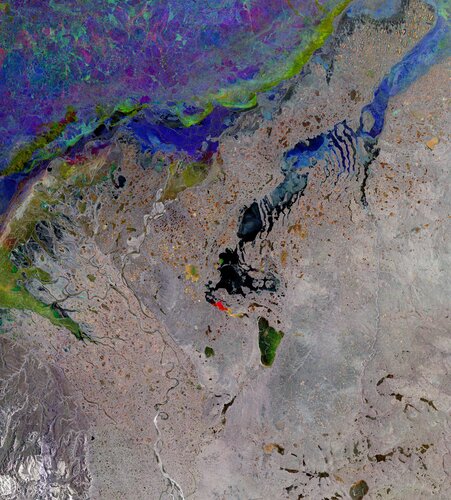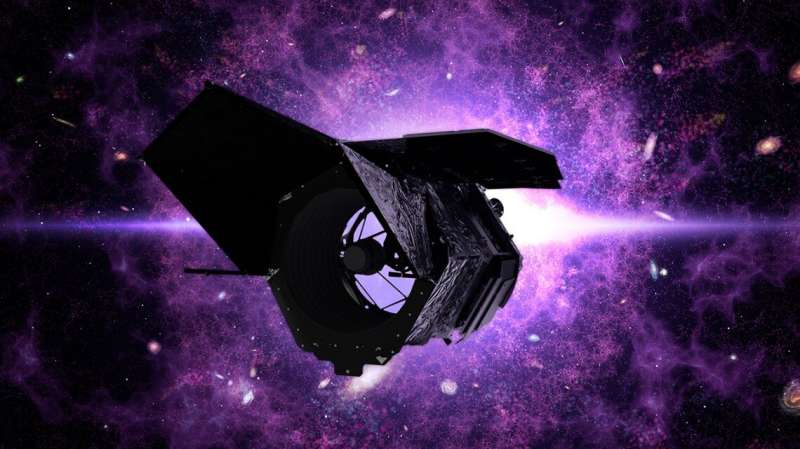
Copernical Team
Galileo ground control segment ready for full operational capability
 In early July the European Union Agency for the Space Programme (EUSPA) announced the upcoming upgrades of the Galileo GCS infrastructure in preparation for the next launch .
Today the new GCS V3.0 infrastructure has been completely deployed in the Galileo Ground Control Centres in Oberpfaffenhofen (Germany) and Fucino (Italy) and is being used to operate the Galileo Satellite Constellatio
In early July the European Union Agency for the Space Programme (EUSPA) announced the upcoming upgrades of the Galileo GCS infrastructure in preparation for the next launch .
Today the new GCS V3.0 infrastructure has been completely deployed in the Galileo Ground Control Centres in Oberpfaffenhofen (Germany) and Fucino (Italy) and is being used to operate the Galileo Satellite Constellatio Heavy bombardment experienced by the planets in the early Solar System
 At approximately 500 kilometres in size, Vesta is the largest known asteroid in the Solar System. Like its numerous companions in the Main Asteroid Belt, it is made of the 'primordial matter' of the Solar System. A new study published in Nature Astronomy concludes that Vesta was exposed to an extensive impact series of large rocky bodies much earlier than previously assumed. This suggests that t
At approximately 500 kilometres in size, Vesta is the largest known asteroid in the Solar System. Like its numerous companions in the Main Asteroid Belt, it is made of the 'primordial matter' of the Solar System. A new study published in Nature Astronomy concludes that Vesta was exposed to an extensive impact series of large rocky bodies much earlier than previously assumed. This suggests that t Building a home in the sky
 After initial solid steps, upcoming missions will ensure operation of China's Tiangong space station. China plans to conduct its Shenzhou XIII manned space flight this month, sending three astronauts to stay six months inside the country's Tiangong space station.
During their mission, the astronauts, whose names have yet to be disclosed, will be mainly tasked with demonstrating and testing
After initial solid steps, upcoming missions will ensure operation of China's Tiangong space station. China plans to conduct its Shenzhou XIII manned space flight this month, sending three astronauts to stay six months inside the country's Tiangong space station.
During their mission, the astronauts, whose names have yet to be disclosed, will be mainly tasked with demonstrating and testing NASA selects crew for simulated trip to a Mars Moon
 Have you ever wondered what it would be like to head deep into space, all the way to Mars? Through a simulated journey, four volunteer research subjects will soon have a chance to find out.
Beginning Oct. 1, 2021, four people will live and work for 45 days inside a unique, ground-based habitat at NASA's Johnson Space Center in Houston. Designed to serve as an analog for isolation, confinem
Have you ever wondered what it would be like to head deep into space, all the way to Mars? Through a simulated journey, four volunteer research subjects will soon have a chance to find out.
Beginning Oct. 1, 2021, four people will live and work for 45 days inside a unique, ground-based habitat at NASA's Johnson Space Center in Houston. Designed to serve as an analog for isolation, confinem Blue Origin accused of 'toxic' work culture, compromising safety
 A group of current and former Blue Origin employees on Thursday accused Jeff Bezos' space company of having a "toxic" work culture with rampant sexual harassment and a pattern of decision-making that prioritized speedy rocket development over safety.
The allegations, firmly rejected by Blue Origin, were outlined in a lengthy blogpost signed by Alexandra Abrams, the company's former head of e
A group of current and former Blue Origin employees on Thursday accused Jeff Bezos' space company of having a "toxic" work culture with rampant sexual harassment and a pattern of decision-making that prioritized speedy rocket development over safety.
The allegations, firmly rejected by Blue Origin, were outlined in a lengthy blogpost signed by Alexandra Abrams, the company's former head of e Space for climate: raising awareness ahead of COP26

Ahead of the 26th UN Climate Change Conference of Parties (COP26), climate and energy ministers are coming together this week in Milan, Italy, to discuss the key political topics to be addressed at the upcoming global summit – taking place in early November in Glasgow.
ESA will be present at both the Pre-COP and COP26, highlighting the vital importance of observing our changing world from space and showing how satellite data play a critical role in underpinning climate policy.
Earth from Space: Mackenzie River, Canada

The Copernicus Sentinel-1 mission takes us over the Mackenzie River, a major river system in the Canadian boreal forest. Its basin is the largest in Canada and is the second largest drainage basin of any North American river, after the Mississippi.
Out now: ESA’s third quarter in images

Out now: ESA’s third quarter in images
Join our free online Space2Connect event

The first ESA virtual conference devoted entirely to telecommunications will take place between 11 October and 14 October.
'Planet confusion' could slow Earth-like exoplanet exploration

When it comes to directly imaging Earth-like exoplanets orbiting faraway stars, seeing isn't always believing.
A new Cornell study finds that next-generation telescopes used to see exoplanets could confuse Earth-like planets with other types of planets in the same solar system.
With today's telescopes, dim distant planets are hard to see against the glare of their host stars, but next-generation tools such as the Nancy Grace Roman Space Telescope, currently under development by NASA, will be better at imaging Earth-like planets, which orbit stars at just the right distance to offer prime conditions for life.
"Once we have the capability of imaging Earth-like planets, we're actually going to have to worry about confusing them with completely different types of planets," said Dmitry Savransky, associate professor in the Sibley School of Mechanical and Aerospace Engineering (College of Engineering) and the Department of Astronomy (College of Arts and Sciences).
